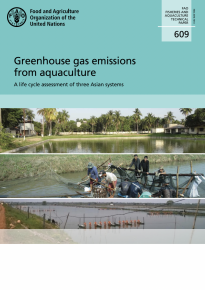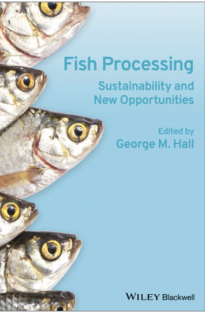Climate Change and FLW
Food loss and waste contributes approximately 8% of the total man-made greenhouse gas (GHG) emissions. Fish waste, if left to rot or is disposed of in landfill will generate methane gas and hence contribute to GHG emissions. Methane is a gas with 25 times more global warming potential than CO2.
Avoiding food loss and waste (FLW) in fish value chains would avoid unnecessary GHG emissions and help mitigate climate change. Adaptation to climate change by changing aquaculture practices, research and investment in new processing or value addition methods is important.
Fish is said to have a low CO2 footprint compared to other animal protein sources. However, the GHG associated with a product tend to increase the further along the value chain it goes. GHG emissions are highest for products at the consumption stage.
Climate change impacts on FLW
Climate change impacts on FLW
There is evidence of impacts of climate change on FLW, such as links to the outbreak of disease, impacts on food safety and the impact of changing weather on fish processing. For example, aquaculture can be affected by warming waters that lead to toxic algal blooms.
Changes in weather patterns have implications for fish landing times as well as traditional drying practices. Climate change as it affects water temperature can also lead to ecosystem changes and changes in species and hence catch composition. This in turn can necessitate changes in post-harvest technology and markets. It also has implications for food safety with the spread of ciguatera poisoning.
Reducing FLW and Climate Change
Reducing FLW and Climate Change
Investment in reducing fish loss and waste represents an important climate change mitigation strategy. Decision makers should be aware of how FLW solutions may impact positively or negatively on GHG emissions and hence climate change. Knowing whether the benefits outweigh the environmental costs is important.
Fishing, processing, cold chain infrastructure and distribution usually require energy and hence will generate GHG emissions. Carbon dioxide emissions from on-board diesel combustion, is directly related to the amount of fuel used.
Hydrochlorofluorocarbons (HCFCs) represent the largest remaining use of ozone-depleting substances (ODS). HCFCs are mainly used in refrigeration and air conditioning equipment.
The production of fish farm inputs (particularly feed) often dominates the climate impact of aquaculture products. In industrialized production systems, fishmeal and fish oil are used in feeds which increase GHG emissions.
The reduction of FLW is an adaptation measure to addressing climate change in a context of reduction of fisheries and aquaculture resources, adding value to fish products and minimizing losses.
Key Publications
|
This document provides insight needed to understand aquaculture's contribution to greenhouse gas emissions (GHG) and the potential for mitigation through the management of aquaculture feeds and feeding. |
| |
Fuel and Energy Use in the Fisheries Sector This document provides an overview of energy use in the fisheries and aquaculture value chains and mitigating measures to reduce energy use. | ||
Fish Processing: Sustainability and New Opportunities This book seeks to address the challenges facing the international seafood industry by presenting the background against which fish processing will exist in the future, and by looking at the sustainability issues relating to conventional fish processing. |




